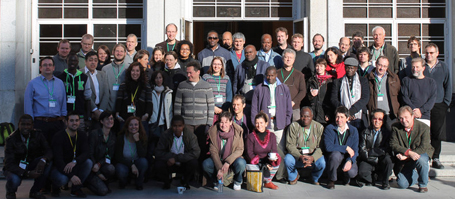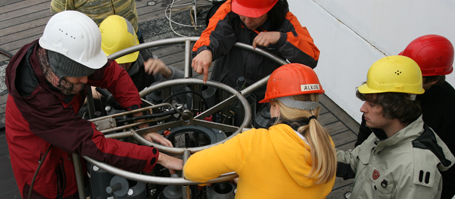Many industrialized regions in East Asia share a fundamental problem. The demand for energy is increasing, however, there are either no or relatively inefficient resources for energy production within their own borders. This applies in particular to the extremely densely populated island of Taiwan. One solution might perhaps lie within the ocean. In the continental slopes at depths of 500 to 2000 metres, there is an energy resource that has only recently come into the focus of energy companies: natural gas hydrate. It can be used as a possible source for methane, which is a natural gas. “The interest in the extraction of gas hydrate is high all around the world. However, many fundamental questions about the gas hydrate deposits remain open“, geophysicist Professor Dr. Christian Berndt from GEOMAR Helmholtz Centre for Ocean Research Kiel explains. In close collaboration with GEOMAR, Taiwan would now like to resolve some of these questions. Therefore, two expeditions into the coastal waters of the island will be starting in the course of this year. The first one will start tomorrow on the German research vessel SONNE with Professor Berndt acting as chief scientist.
GEOMAR belongs to the world’s leading institutions in the field of gas hydrate research. In the mid-1990’s Professor Erwin Süss from Kiel, meanwhile emeritus professor, was the first to discover large natural gas hydrate resources under sediments on the ocean floor. Back then, the investigations concentrated on the west coast of the USA. Meanwhile however, natural gas hydrates have been found in ocean margins all around the world. “The amount of energy, that is stored in natural gas hydrate in the oceans exceeds the presently known oil and conventional natural gas deposits by far“, Professor Berndt from GEOMAR explains.
Methane hydrates form in the sea floor whenever there is enough methane available, the pressure is sufficiently high and the water temperature low enough. Under these conditions the water molecules create cage-like structures in which they capture large quantities of methane molecules.
In the southwest of Taiwan these conditions exist. There, the formation of hydrate is also fostered by plate tectonics. The Eurasian tectonic plate is being pushed under the Philippine plate, compressing huge quantities of sediments. Natural gases and fluids escape through these sediment packages forming gas hydrate on their way to the sea floor.
The five week long expedition now starting shall help in understanding the role plate tectonics play in the formation of gas hydrates. To understand the geological processes the scientists will use the latest geophysical methods, for example seismic systems which can create 3D images of the subsurface. “With the new methods we can detect where gas hydrate is stored in the seafloor and quantify the amount ten times better than before”, notes Professor Berndt.
The cruise is also about a better understanding of how hydrate is formed and dissolved as well as the impact of hydrate on the stability of the sea floor. “These are fundamental scientific questions that need to be answered in order to assess the risks of hydrate mining.“, the geophysicists points out.
The expedition is the culmination of six years of collaboration between Taiwanese and German scientists. It will be continued in a second excursion in June with an entirely new Taiwanese research vessel under the leadership of Dr. Wu-Cheng Chi of the Taiwanese academy of sciences, Academia Sinica. The German Ministry of Research and Education is financing this project with 1.2 million Euros while Taiwan contributes another 300.000 euros.
“The exploitation of gas hydrate can only be done safely, if we understand the system. We are very pleased with the opportunity to work on this matter together with our colleagues from Taiwan”, says Professor Berndt.
Expedition at a glance:
RV SONNE SO227
Duration: 30 March – 3 May 2013
Chief Scientist: Professor Dr Christian Berndt, GEOMAR
Departure: Kaoshiung (Taiwan)
Return: Kaoshiung (Taiwan)
You can find detailed information about the cruise at the GEOMAR expedition pages.
Contact:
Prof Dr Christian Berndt (GEOMAR, RD4-Marine Geodynamics)
cberndt@geomar.de
Jan Steffen (GEOMAR, Communication & Media), Tel.: 0049 431 600-2811
jsteffen@geomar.de
…



